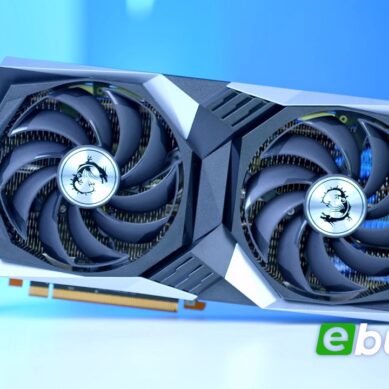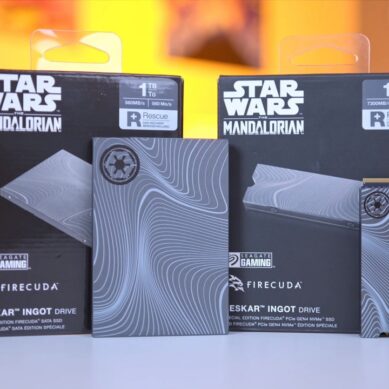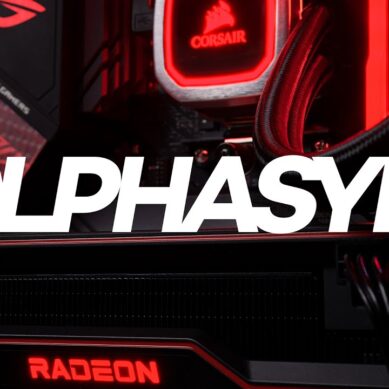
Late last year, Crucial launched a set of solid-state drives that provide exceptional value at the lower end of the market. They present those of us still clinging to our mechanical storage with a strong incentive to finally make the switch. The BX300 comes in three sorts – there’s a 120GB version, a 240GB version and a 480GB version. They’ve since been superseded by the BX500 series, but are they still worth picking up? We’ve examined the family more closely – see whether we think they’re still worth it.
Speed
If you’re making the switch from a mechanical hard drive, you’re going to notice a substantial increase in speed, particularly if you’re using the BX300 as a boot drive. Crucial estimates that the drive is three times as fast as a typical drive (a 7200rpm mechanical Western Digital Drive). We’re not inclined to doubt them; the upgrade makes a noticeable difference.
You can expect a read performance of around 565MB/s, and a write performance just a little lower at 525MB/s. In the real world, this means less time spent staring at loading screens, greater responsivity, and a slicker experience in Windows. It’s not just hard drives being shown up here – in some applications, you can expect performance that outstrips that of the similarly-priced Samsung EVO under stress.
One of the technical tricks Crucial employs to achieve these speeds is called Momentum Cache, which is part of the included software. It works by storing data scheduled to be written into the drive in a special section of memory so that it can be written all in one go as a sequential write (sequential writes being much faster than random ones). This technique does have a slight downside, however, in that it’ll cause data corruption if power is withdrawn midway through the write. For this reason, the software recommends explicitly that you use it alongside a battery backup.
Energy Efficiency
Crucial provides another flattering comparison with a standard mechanical drive: the BX300 is 45 times more energy efficient. If you’re running your computer for hours a day, every day, then this extra expenditure more than justifies the meagre cost of a small SSD. The drive also compares favourably with other solid-state options; it’s the company’s most power-friendly drive to date.
Durability
Another advantage of solid-state storage is that there are fewer components at risk of breaking. As such, you can be fairly sure that your data will be secure against mechanical failure and the stress of old age. With that said, the three-year warranty provided by Crucial falls some way short of the five-year one provided by Samsung. The advertised endurance varies according to which flavour of drive you’re going for. The smallest of the three, the 120GB model, comes with a rating of 55TBW (terabytes written), while the largest comes with a rating of 160. If you’re performing data-intensive tasks that involve large amounts of writing and deleting (such as video editing), this might be a concern. If you’re just playing games, however, less so.
Given Crucial’s pitching this as a budget family of drives, it’s unsurprising that it hasn’t been quite as generous with their warranties, but it would have been nice to have had the security that comes with the whole five years.
Affordability
Solid-state storage is a mature technology now, and you’ll find it even in low-powered office rigs. As such, you don’t need deep pockets to get an SSD into your rig. You can now pay less for a 120GB SSD than you would for a new game. This effectively means that the SATA SSD has positioned itself where the mechanical drive once was, while the PCIe storage solutions now represent the cutting edge. With the help of multiple drives, you can cram terabytes of solid-state storage into the same case. The BX300 series lacks a 1TB option, and isn’t economical if you’re after lots of extra space.
Since the BX300 hit the market, things have become much more competitive, especially at the low end of the SSD universe. We stock drives from Kingston, SanDisk and Western Digital, all of which outstrip the older Crucial drive – not to mention the fact that there’s a newer family of budget-friendly Crucial drives to contend with: the BX500.
Ease of Upgrade
Finally, we should consider just how easy an SSD is to install relative to the other components in your PC. Simply slot into a spare slot in your case, and wire up the power and data connectors to the motherboard. There’s no need to worry about whether your games have been optimised to leverage the added storage, and there are no bridging adaptors needed to link your new drive with your old in the same way as there is with multiple graphics cards.
The drive ships with special plastic adaptors that allows it to fit into a larger drive bay – meaning it’s compatible with a range of cases, laptop and desktop. A system comprising several storage drives is a flexible solution. You’ll be able to partition your drives however you see fit, and thereby make things as simple or complex as you like within Windows.
The market for lightning-quick solid-state storage is vibrant and competitive, and the pace of technological change is faster than ever, so it’s easy to lose sight of how much of a boost an SSD can grant – even if it’s last year’s model, as is the case here.
The BX300 hard drives offer fantastic performance at a reasonable price – but, as we’ve mentioned, the more recent BX500 drives have just hit the market. They offer the same functionality you’ll get from the BX300s, except the performance is a little better. Or, if you’d go for something a little quicker and roomy, there are the more prestigious MX500 drives to consider. They’re pricier, but if you’re after large amounts of high-quality storage, then the economies of scale might well prove irresistible.






